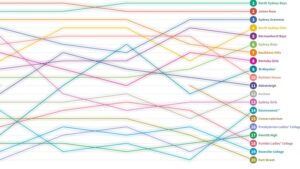
COLUMBUS, Ohio – A new study from The Ohio State University has uncovered intriguing insights into how our perception of the world is influenced by the angle at which we view objects. The research, published in the journal Perception, demonstrates that people tend to overestimate the steepness of hills, a finding that holds true regardless of their visual orientation or line of sight.
Led by Dennis Shaffer, a professor of psychology at Ohio State’s Mansfield campus, the study aimed to explore the reasons behind this perceptual bias and how altering a person’s gaze could affect their perception. “If you’re driving toward a hill that you see in the distance, it typically looks a lot steeper from far away than when you get right on it,” Shaffer explained. “Part of that is because of the way you’re looking at it, you’re changing your gaze relative to the object.”
Understanding Perception Through Experiments
The research involved two experiments designed to test this phenomenon. In the first, 36 participants were asked to estimate the slant of a wooden ramp while either lying down or sitting on a yoga mat. They assessed the orientation of four slopes from a distance of about seven feet.
The second experiment examined how eye height impacts perception. Participants stood on the third rung of a step ladder or sat cross-legged on a yoga mat while estimating the slope of the ramp. The results were consistent: people overestimated the slopes more when the distance between their eye height and the surface of the slope was reduced.
“In general, people overestimate the slopes of surfaces by a factor of 1.5, so most people would estimate a 30 degree hill to be 45 degrees,” said Shaffer.
Implications of Eye Height on Perception
This study supports long-held theories about slope perception, revealing a significant negative correlation between eye height and slant estimates. Brooke Hill, a co-author and undergraduate student in psychology at Ohio State Mansfield, noted that shorter individuals tend to predict ramp orientations to be steeper than taller individuals do. “This helps to explain why the world might be perceived much differently by someone seated in a car versus higher up in a truck or a bus,” she said.
The implications of these findings are far-reaching, offering potential advancements in road safety, GPS navigation, vehicle design, and other assistive technologies. “We don’t realize that as humans, perception is everything,” Hill added. Understanding how gaze alters our worldview is crucial for developing systems that accommodate these perceptual differences.
Future Research Directions
Looking ahead, Shaffer and his team plan to further investigate how various vantage points and methods influence an individual’s gaze and perception. “Humans are really good pattern-seekers,” Shaffer remarked. “By teaching people about head orientation and what it does for their perception of different things, we can help them keep a steadier version of what the world looks like.”
The study’s findings underscore the importance of considering human perception in design and safety measures. As Shaffer’s team continues their research, they aim to uncover more about how unique perspectives shape our collective society.
Montse Juarez, an undergraduate student at Ohio State Mansfield, also contributed as a co-author to this groundbreaking study.
Contact: Dennis Shaffer, [email protected]
Written by: Tatyana Woodall, [email protected]







